Health Essentials For Your Family Holiday
Are you planning a trip abroad this summer? Or perhaps you will stay close to home and enjoy Switzerland. Whether away on a lake adventure, a beach holiday, a city experience, a camping break or a hike in the wild, you will want your children to remain fit and healthy so everyone can have fun.
We can never completely eliminate the risks of undesirable holiday extras like diarrhoea or heat rash, but there is plenty we can do to prepare for potential problems. Here are my top five travel health essentials for family holidays:
1. Paracetamol
I can’t imagine going away without a handy bottle of paracetamol drops or syrup. It is absolutely essential for dealing with a miserable, feverish child and also for those unexpected holiday knocks and pains. The oral form is not so helpful if you have a vomiting baby with a temperature, so carrying a supply of paracetamol suppositories is also a good idea.
2. Alcohol-based sanitizer for clean hands
Unlimited access to soap and hot water is the ideal set up but is often something we don’t have when we are away on holiday. This is where disinfectant hand gels and sprays come into their own. Choose a brand that contains at least 60% alcohol. Pharmacies usually stock several types (e.g., Sterillium, Nexcare). These nifty little bottles are brilliant in between nappy changes or toilet visits when you are in less-than-hygienic settings. Make sure you have one stashed in your handbag, your nappy changing bag, your beach bag and your daypack.
3. ORS (oral rehydration salts) for dealing with the dreaded traveller’s diarrhoea
When visiting an area where the water supply might not agree with you, try to adhere to the usual checklist of preventative advice. Don’t have ice in drinks, avoid tap water, and steer clear of salads. Don’t eat fruit that you haven’t peeled yourself. Brush your teeth using bottled water. Beware of undercooked foods like seafood; shun milk and dairy products, and practise good hygiene measures when using swimming pools.
Choosing to eat fresh, well-cooked street cuisine from a market stall with a high turnover is often a much safer option than a hotel buffet brimming with lukewarm food.
No matter what you do, someone in your family might end up with a bout of diarrhoea. When you don’t have a wardrobe full of clean clothes or the convenience of a washing machine nearby, a child with an upset tummy can create a very stressful situation.
Loperamide (such as Imodium) is often used by adults with diarrhoea. A loperamide syrup is available for children aged two to five years. However, it is better to get medical advice before using loperamide for any child. Children under two should not be given loperamide at all.
Make sure you have packed sachets of ORS (oral rehydration salts), such as Elotrans or Normolytoral. These help compensate for salt and fluid loss and are easily made up by dissolving in hot unsweetened tea (which is then cooled to room temperature). Use a straw or a spoon (or even a small plastic syringe) to get your child to swallow small, frequent amounts of the solution.
You can even prepare your own simple rehydration mix with a litre of clean water to which you add one level teaspoon of salt and eight level teaspoons of sugar.
The real worry is the risk of dehydration in children suffering the effects of vomiting and diarrhoea. Do not hesitate to seek medical help, particularly for very young children.
4. High-SPF sunscreen
Enjoying good weather is often the highlight of a memorable family holiday. Sun protection creams and sprays should have a high SPF (sun protection factor). Advice varies about the exact level of SPF to look for, with SPF 15 being regarded as the absolute minimum that everyone should use. In children, it is better to go for at least SPF 30 or above. There are lots of good sunscreens formulated for babies and children.
Apply, reapply and reapply again. Sunscreen needs to be reapplied every two hours or so, and even more frequently when swimming. Remember to include the areas that aren’t covered by clothing, such as ears and backs of hands.
Sunburn during childhood really can increase the risk of skin cancer in later life.
Avoid the strongest sun at the height of the day – look for lovely shady trees to lounge and play under. Put UV-blocking sun goggles on the kids (those with elastic bands right around the head are more likely to stay put). Use wide brimmed hats or legionnaire-style hats with flaps, and make sure everyone drinks plenty of water.
You can always buy sunscreen at your holiday destination, but the higher-SPF ones are often harder to come by (for example, SPF 50+), so it is probably better to stock up before you leave.
5. Antihistamines and hydrocortisone cream for insect bites
I usually carry an antihistamine such as dimetindene drops (e.g., Feniallerg) for relieving the itching caused by insect bites. For local swelling and skin irritation, I apply a bit of mild steroid cream to the skin or use one of those cooling roll-ons (like Parapic).
The range of insecticide products on the market to help you avoid bites in the first place is huge, with some containing DEET (an oil that repels insects) in varying concentrations. In general, anything with less than 20% DEET is probably ineffective, and concentrations above 50% DEET are generally not needed.
An example of a DEET-containing skin product readily available in Swiss pharmacies is Anti-Brumm Forte (not for children under three). The brand NOBITE produces a permethrin-containing spray for impregnating your clothing (not recommended for under-threes). Babies younger than two months should not have DEET applied to their skin. Non-DEET products to help avoid insect bites for children in the one- to three-year-old range are also readily available. Consider long-sleeved clothing and trousers tucked into socks (despite it being unfashionable) at key times such as dusk, and also look at indoor protective measures such as netting and room vaporisers.
Of course, if you are travelling to a known malaria-risk zone, seek advice well in advance from your local travel health centre. A list of travel clinics can be found here (site available in German and French). Never be tempted to buy antimalarials at your holiday destination, even though they will invariably be cheaper. Antimalarials are often subject to counterfeiting, and fake medication can appear startlingly authentic.
If you (or your child) were born in a malaria-risk area, or lived in one for some period of time, do not assume that you are immune to malaria when you go back there for holidays. Acquired immunity does not last once you have left a malaria-risk area.
Other travel essentials will depend on your family, the ages of your children, your destination, and how long your trip will last. Below are a few more ideas that may be useful, depending on the circumstances.
Usual medications
If any family member takes daily medication, you must have more than an adequate supply in case of spillage or lost luggage. Have enough in your hand luggage to last for a few days at least. Keep everything in its original packaging, and if you can, have a written list of your prescription medicines, including their generic names.
Usual medicines can also include those items you only use sometimes, but cannot tolerate trying to track down once you are away on holiday. For me, this means always packing the antacid Rennie. I hardly ever use it (as I rarely get heartburn), but I like to take it on holiday with me just in case.
First-aid kit
This can be as basic or as elaborate as you like. I usually throw a couple of plasters (a.k.a. Band-Aids) into a Ziploc bag, but better planning would mean a range of different-sized bandages and plasters, tape, steri-strips, a small pair of scissors, tweezers, sterile wipes and a thermometer.
Motion-sickness treatments
Whether for air-, sea- or carsickness, get your children to avoid activities such as looking at books while moving. They can try shutting their eyes; being able to see into the distance just above the horizon may also help.
Anti-motion sickness wristbands (such as Sea-Bands) apply pressure to a wrist acupuncture point and can be used in young children. Medications like motion-sickness chewing gum are suitable for older children only.
EHIC (European Health Insurance Card)
The EHIC is free. Your health insurance provider will issue each family member with one. Often, it is already an integral part of your normal Swiss health insurance card (printed on the other side).
Always carry it if you are on holiday in any of the EEA (European Economic Area) countries. It does not cover all your health costs, and it is not a substitute for travel insurance. But it can help you minimise expensive bills if you need emergency health care.
Tick remover
Ticks are often found in long grassy areas and forests. If you are camping or doing a lot of hiking across certain European countries including Switzerland, Austria and Germany, a tick remover (or a pair of tweezers) is an important piece of kit to have on you at all times.
Ticks carrying the TBE (tick-borne encephalitis) virus are only found in particular regions. Vaccination against TBE is advisable if you live or spend a lot of time in an endemic area. Three doses of vaccine are required, so it is not practical for impromptu holidays. It is usually not recommended for children under the age of six.
Water purification tablets and cold water sterilisation tablets
If safe drinking water is going to be a problem (and bottled water is not available, and there are no facilities for boiling water), you can use water purification tablets (e.g., Micropur).
If you have a baby and need to sterilise feeding paraphernalia, you probably use something like a steam steriliser or microwave steriliser at home. This can be impractical if you are travelling a lot, so you may wish to consider tablets for cold-water sterilisation (e.g., Sterinova).
Lollipops
When flying, ear pain can be severe on descent for some children due to unequal pressure differences on either side of the eardrum. Chewing gum or drinking or breastfeeding can all help. I find sucking on lollipops an agreeable way to deal with aeroplane ear.
This guide to travel health essentials is by no means an exhaustive list. I would love to hear about the things you always pack for your family. Please share your tips!
Note: The brand names mentioned in this article are intended to provide a guide for those unfamiliar with products available in Swiss pharmacies. The use of the brand names is not an endorsement. Please discuss your individual travel health needs with your own doctor or with a travel clinic.
By Dr Jahura Hossain
Born and brought up in London, Jahura is a U.K.-qualified doctor. She has worked in hospitals, general practice, public health, prison medicine, and the pharmaceutical industry.
© Copyright. Jahura Hossain. 2013. All rights reserved. No part of this article may be reproduced without the express consent of the author.
Illustrations by Laura Munteanu.
Laura lives in Zurich with her daughter and husband.

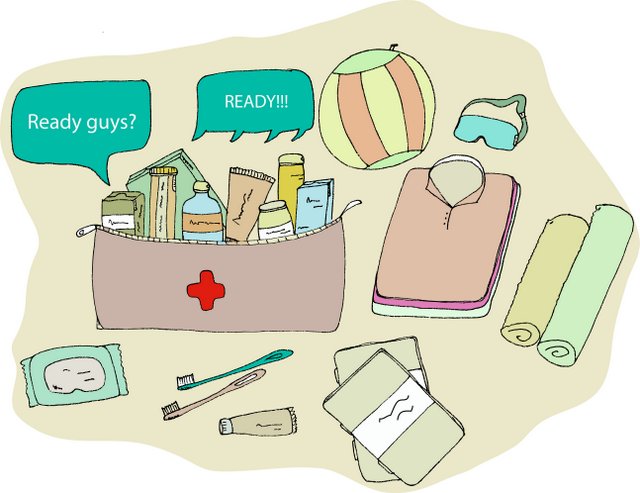
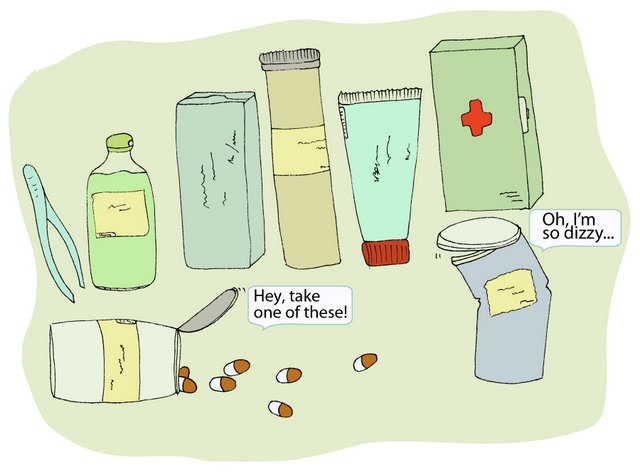
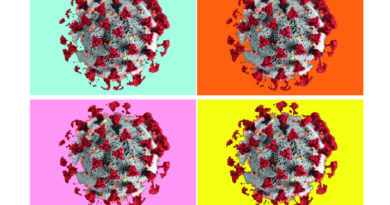
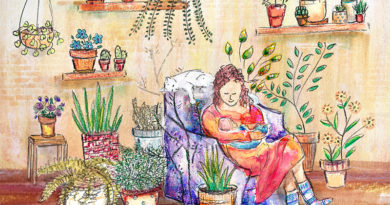
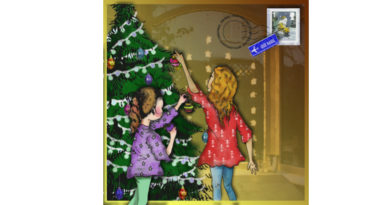
I bought a tick remover for the first time recently. It is a little card-like plastic thing that looks like a great way to remove a tick. I think it must be a lot easier than using tweezers. I haven’t needed it yet, but I got one just in case.
Thanks, Tina, for the tip.
I bought a tick remover for the first time recently. It is a little card-like plastic thing that looks like a great way to remove a tick. I think it must be a lot easier than using tweezers. I haven’t needed it yet, but I got one just in case.
Thanks, Tina, for the tip.
There was lots of useful info in this column, thanks Jahura. I didn’t know about the motion sickness chewing gum until I read this so I bought some at a (Swiss) pharmacy. My son gets quite carsick and when we were driving over a mountain pass last week he started feeling a bit queasy. I immediately gave him a motion-sickness chewing gum pellet and he was fine. The ones we had were to be chewed for not longer than ten minutes and they had a mint flavour. The pharmacy gave me all the details of how many to take per day, etc. That particular brand was ‘Trawell’ suitable for children aged 8-12 years.
There was lots of useful info in this column, thanks Jahura. I didn’t know about the motion sickness chewing gum until I read this so I bought some at a (Swiss) pharmacy. My son gets quite carsick and when we were driving over a mountain pass last week he started feeling a bit queasy. I immediately gave him a motion-sickness chewing gum pellet and he was fine. The ones we had were to be chewed for not longer than ten minutes and they had a mint flavour. The pharmacy gave me all the details of how many to take per day, etc. That particular brand was ‘Trawell’ suitable for children aged 8-12 years.
Hi Jahura, what a super article. Thanks so much for taking the time to share all this important information. A readable, friendly approach with very useful practical tips that will help many parents in Switzerland 🙂
Dr Penny Fraser from HealthFirst.ch
Thank you for your comments Dr Fraser!
Hi Jahura, what a super article. Thanks so much for taking the time to share all this important information. A readable, friendly approach with very useful practical tips that will help many parents in Switzerland 🙂
Dr Penny Fraser from HealthFirst.ch
Andrea, interesting to hear that you had an opportunity to try the motion sickness chewing gum. Thanks for adding that the brand ‘Trawell’ is suitable for 8-12 year olds.
Andrea, interesting to hear that you had an opportunity to try the motion sickness chewing gum. Thanks for adding that the brand ‘Trawell’ is suitable for 8-12 year olds.